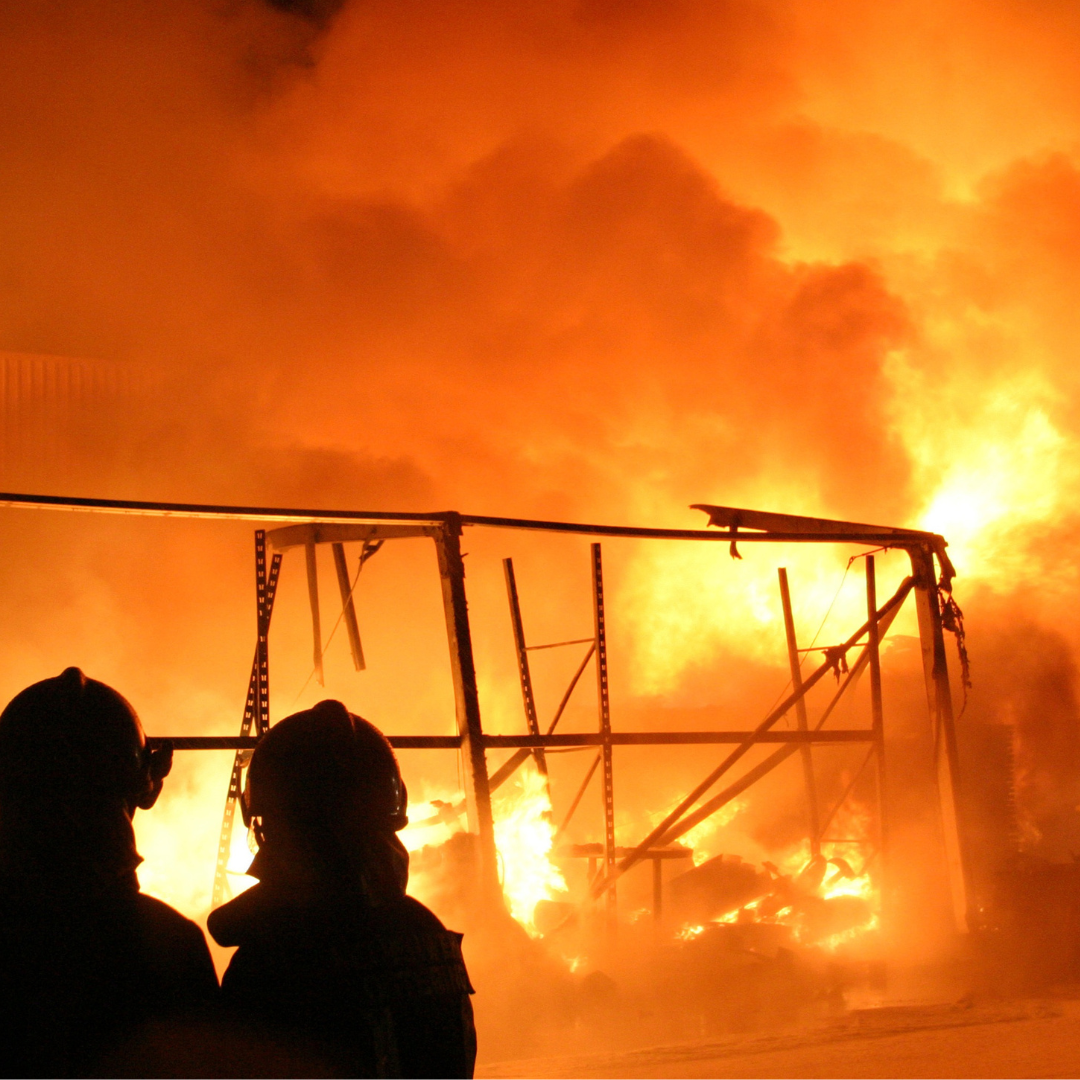Fire risk in non-residential buildings

Following on from our recent blog posts where we look at new fire safety regulations, we’ve been very interested in recent research around fire risk to non-residential buildings. In 2021 alone, there were nearly 12,000 major fire incidents at non-residential premises.
According to SHP, private non-residential buildings, like private garages, greenhouses, and garden sheds, have the highest rate of fire incidents. This is most likely because many of these buildings are used for household storage (often Christmas decorations, luggage, seasonal clothing etc) and many of these materials could act as a catalyst for fire risk.
Industrial buildings – such as vehicle repair sites, or mines and quarries, for instance, were also found to be at higher chance of catching fire, as opposed to the likes of retail communal living premises. Other public buildings, such as religious buildings, public toilets and car parks, were regarded as the third most likely building group to catch fire.
Interestingly, entertainment, culture and sporting facilities were at a lower fire risk, as were educational facilities, which we can assume is due to their mandatory and up-to-date fire safety policies.
Hospitals and medical care buildings were found to be one of the least combustible buildings overall however, issues such as faulty equipment and electrical outlet overload still posed a strong risk. The building type least likely to catch fire was offices and call centres, which usually only caught alight because of clutter and human error.
If you’re as interested in this topic as us, then check out this excellent article on SHP where Arinite Health and Safety further explore the industry buildings most at risk of a fire.
Looking for a fire risk assessment for your business? Contact us here to find out how we can assist you.
Our content is correct at the date of publishing, but should not be taken as legal advice, and our articles don’t replace Risk Assessments. Armour will not be held accountable for any legal actions the reader may take.

